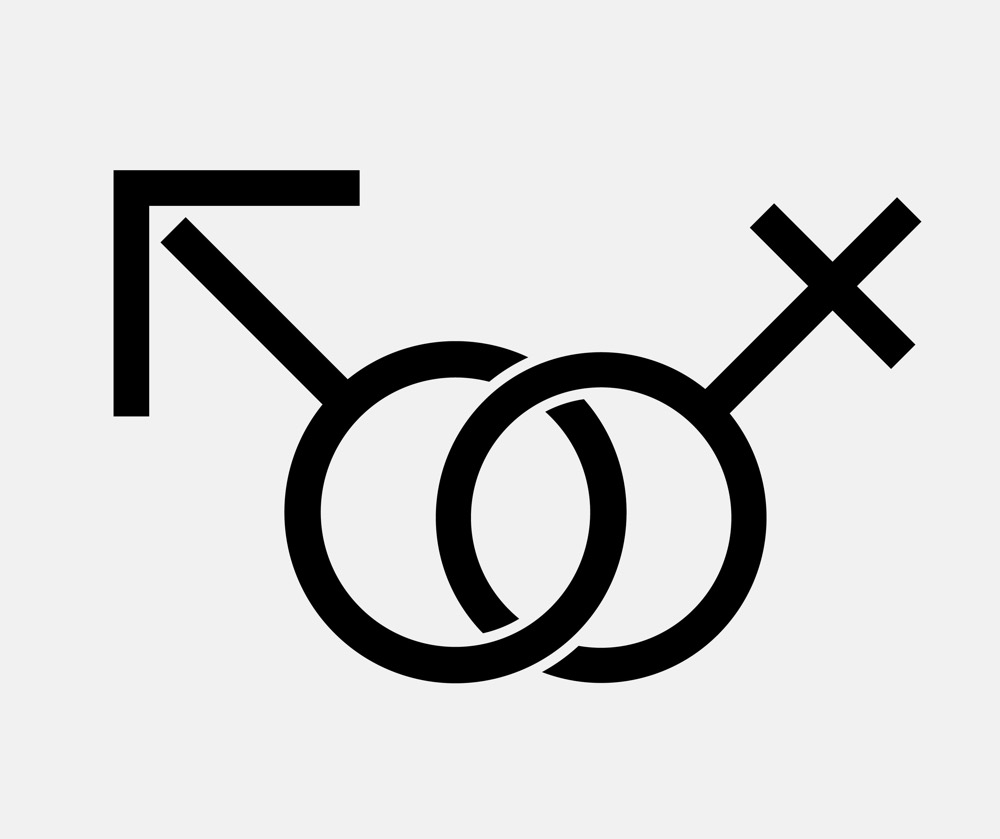
A Google employee recently published an anti-diversity manifesto on an internal discussion board that has gone viral and stirred furious debate both inside and outside the company.
In the essay, James Damore claimed that differences in the number of women and men in tech companies such as Google can be largely explained by biological differences, rather than sexism. As a result, some diversity efforts aimed at increasing the representation of women and other minorities are discriminatory against men, he argued. (After the memo went public, Google fired Damore for perpetuating gender stereotypes, Reuters reported.)
But what does science have to say about the biological differences between men and women, and how do they affect the gender gap in tech?
"It would be foolish to say there are no biological differences between men and women," said Margaret McCarthy, a neuroscientist at the University of Maryland who studies gender differences in the brain. "Sex is the most potent of all biological variables." [Men vs. Women: Our Key Physical Differences Explained]
However, pinning the lack of women in tech to biological differences is on much shakier ground, when socialization or sexism are much likelier explanations, several experts told Live Science.
Anti-diversity manifesto
In Damore's manifesto, he claimed that, compared with men, women on average are more attracted to aesthetics than to ideas, more empathizing than systematic and more extroverted than introverted, but less assertive and less competitive. As a result, he said, women may have more difficulty negotiating higher salaries, speaking up or asking for raises.
He also claimed that women exhibited higher neuroticism, which is manifested in lower stress tolerance and higher anxiety, and that women are less willing to work the long hours necessary to achieve high-paying, high-status jobs. In another section of the manifesto, he said people on the ideological left deny biological differences when they are tied to IQ and sex differences.
Get the world’s most fascinating discoveries delivered straight to your inbox.
Different brains
It turns out, there are extensive neuroanatomical differences between men's brains and women's brains on average, said Larry Cahill, a neurobiologist at the University of California, Irvine. This shouldn't be surprising; after all, humans are mammals, and mammals exhibit extensive sex-based differences in brain chemistry, anatomy, genetics and function, Cahill told Live Science.
McCarthy agreed.
"We are biologically different," McCarthy told Live Science. "It would be crazy to say that difference in biology doesn't to some degree extend to our brains. To think that we have somehow escaped millions of years of evolution because we're modern humans, I think, is just folly."
For instance, women on average have more gray matter, the computational workhorse of the brain, while men have more white matter, which connects brain cells in different regions of the gray matter. Men and women also have different connective networks between brain cells, on average, according to a 2013 study in the journal Proceedings of the National Academy of Sciences. What's more, men's brains tend to be larger than women's. And sex hormones such as testosterone and estrogen, which vary dramatically between men and women, also bind differently to receptors in the brain. [10 Surprising Facts About a Man's Brain]
However, these average differences do not make it possible to type individual brains: A 2015 study in the same journal found it was impossible to categorize most brains as stereotypically male or female based on gray matter in several brain regions.
"Gender differences, small or large, do not 'add up' to create two types of people," said Daphna Joel, a neuroscientist at Tel Aviv University in Israel who was one of the authors of the 2015 study. "Rather, each person has a unique mosaic of feminine (that is, more common in women than in men) and masculine (that is, more common in men than in women) psychological characteristics."
Similar behavior
Once scientists make the leap from brain anatomy to function, the connection gets even shakier. For instance, bird brains are smaller than mammalian brains, and they're wired very differently. Yet many birds can tackle brainy feats that stymie the smartest nonhuman mammals. Clearly, brain anatomy does not reveal the whole story, McCarthy said. [Are Big Brains Smarter?]
What's more, many differences in the structure of men's brains versus women's brains may actually counteract gender differences in behavior, a 2004 study in the journal Endocrinology found. For instance, women inherit two X chromosomes, while men inherit an X and a Y. But in women's brains, one of the X chromosomes is almost completely silenced to keep them from getting a double dose of gene expression, meaning that men's and women's brains express roughly the same number of X chromosome genes — even though, genetically, they have this chromosome difference.
Still, there's no reason to discount the possibility that anatomical or biological differences translate to behavioral differences, Cahill told Live Science.
"Is it inherently plausible that biologically based sex-related influences affect all aspects of human behavior, including careers people choose?" Cahill asked. "The answer is yes."
Manifesto claims
Still, many of the average differences between men and women that were described in the manifesto are either small or near zero, according to a 2005 study in the journal American Psychologist. Some, if not all, of the average differences could be due to socialization rather than biology, several experts said.
For instance, across cultures, men tend to be better at rotating objects in their mind than women are. However, in India, tribal women in matrilineal societies who hold the purse strings perform better at this task than women in nearby, genetically similar tribes, which are patrilineal. Education also dramatically shrinks this gap in spatial abilities, the researchers found.
In the United States, men outperform women on the math SAT, while in Japan, men and women perform equally well on the math portion of this standardized test — and outperform both their male and female American counterparts, McCarthy said. Meanwhile, in some Nordic countries, women outperform men on the math portion of the SAT.
Similar disparities in science versus reading abilities exist across countries, said Bernd Frick, a professor of organizational economics at Paderborn University in Germany. [6 Myths About Girls and Science]
"Girls are told that reading abilities are important. Boys are told that sciences are important, and you see that reflected in standardized tests with young kids ages 8 to 9 or 10 to 12," Frick told Live Science.
However, more patriarchal societies show a much larger gap in these test scores, while egalitarian cultures show only a tiny gap, he added. That suggests that culture, rather than brain differences, explains most of the gap, he added.
As for women's versus men's average intelligence (IQ), there is no average difference.
"That has been shown over and over and over with millions and millions of data points," McCarthy said.
Women do tend to exhibit higher rates of diagnosis with certain types of neuropsychiatric diseases, such as major depressive disorder, anxiety and obsessive compulsive disorder, McCarthy said. However, the difference in the gender ratio for anxiety is quite small compared with differences for other diseases such as anorexia nervosa or autism. Men are also less likely to seek out diagnoses and more likely to self-medicate with alcohol and drugs, meaning at least some of the gender difference in the rates of depression or anxiety could be due to underdiagnosis in men, not a differential response to stress, she added. [7 Ways Depression Differs in Men and Women]
"Is the gender difference in the level of stress you're manifesting, or is it that you're willing to admit you're feeling that stress and anxiety?" McCarthy asked. "These are very complex questions [that] we don't know the answer for."
Also, gender differences may wax or wane through the life span, making it difficult to tease out the effects of socialization versus biology. For instance, young girls tend to start out being much more aggressive and assertive but become less so by the adolescent years.
"Is it because they are punished for getting out of their 'gender lane,' or is it because they go through puberty?" McCarthy said. Right now, there's no way to know, she said.
Other work has shown that women are less competitive than men on average. However, a 2011 study of ultramarathoners, published in the Journal of Sports Economics, showed that as societies become more egalitarian and the prize money women compete for approaches the pots for men, the competitiveness gap disappears.
"So it's a matter of culture," Frick said.
Other explanations for the tech gap
The manifesto goes way out on a limb, however, when it aims to explain the gender gap in tech to biology when other factors such as sexism or outmoded family structures clearly play a role, McCarthy said.
For instance, several studies have shown that a powerful way to attract more women to leadership positions is to have more women in leadership roles, McCarthy said. So the dearth of senior women in tech could lead to a vicious cycle of under-representation, she added.
What's more, women do not inherently want to work fewer hours. Rather, many are expected to shoulder a second shift of childcare and chores when they get home, McCarthy said.
"They have two jobs," McCarthy said.
And sexism in the tech world isn't benign either, Cahill said.
"I always hear about a bro cultulre [in tech]," Cahill said. "It's probably the case that the average woman will chafe more at the average bro culture than the average man."
What's more, no studies have shown that the skills and personality traits needed for tech jobs are uniquely male. For instance, no studies suggest that being agreeable, empathetic or extroverted (the traits Damore ascribed to women) are liabilities for those in the tech field, McCarthy said.
"If Google needed only people with only extremely masculine characteristics, then there would be more suitable male candidates than female candidates," Joel said. "But even in the relatively narrow field of tech, there are many different combinations of characteristics (some more common in women and some more common in men) that fit, so sex differences in the prevalence of these mosaics is unlikely to explain the gender gap in tech."
Originally published on Live Science.

Tia is the managing editor and was previously a senior writer for Live Science. Her work has appeared in Scientific American, Wired.com and other outlets. She holds a master's degree in bioengineering from the University of Washington, a graduate certificate in science writing from UC Santa Cruz and a bachelor's degree in mechanical engineering from the University of Texas at Austin. Tia was part of a team at the Milwaukee Journal Sentinel that published the Empty Cradles series on preterm births, which won multiple awards, including the 2012 Casey Medal for Meritorious Journalism.
